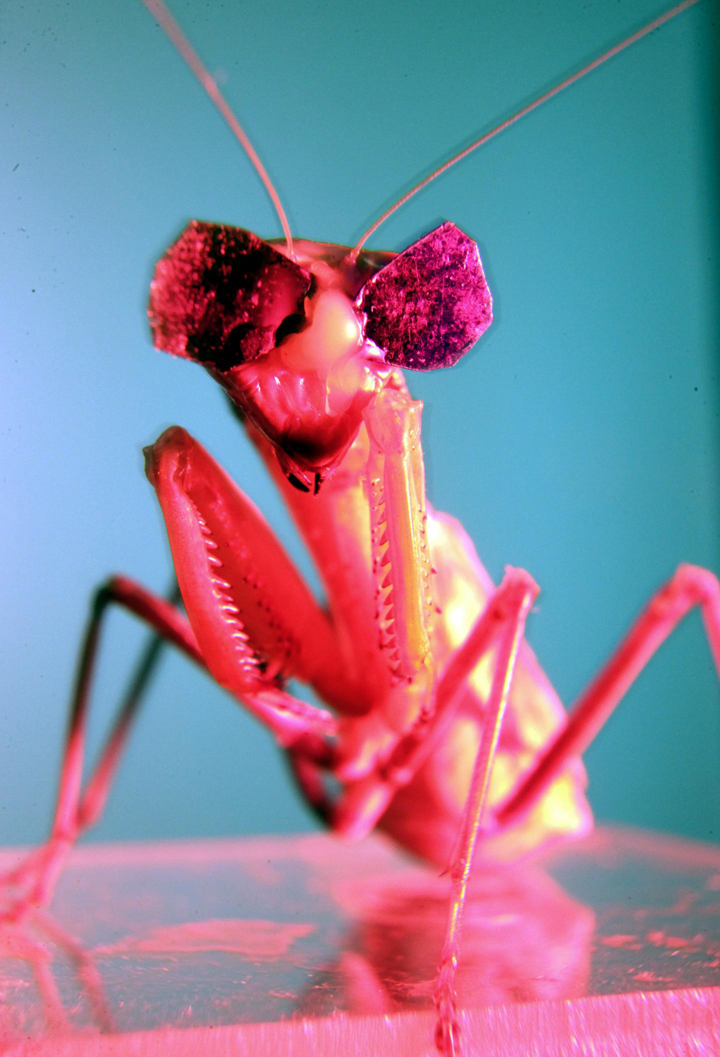Scientific investigation can take on many forms. In this case, it meant putting 3-D glasses on a praying mantis.

Researchers from Newcastle University in the United Kingdom, wanted to better understand how praying mantises see the world around them. These insects are fierce hunters with lightning-quick reflexes.
In the 1980s, it was discovered that mantises possessed 3-D vision — called stereopsis, However, the tools available limited the amount of research that could be done.
READ MORE: Printing body parts? It’s possible: Scientists craft an ear using 3-D printer and living cells
Most studies on 3-D vision have centred on vertebrates, but the Newcastle University team wanted to probe deeper into invertebrates, like the praying mantis.

Get daily National news
The researchers made special old-school 3-D glasses: that is, with one blue lens and one green lens (as opposed to the blue and red glasses). Praying mantises don’t see red very well. They then affixed the glasses to the eyes of the praying mantises using beeswax.
They found that when the mantises were shown an image of a bug in 2-D, they didn’t try to catch it. However, when the same bug was shown in 3-D they struck out at them. The researchers then concluded that praying mantises see in 3-D.
Jenny Read, professor of vision science and leader of the study, said: “Despite their minute brains, mantises are sophisticated visual hunters which can capture prey with terrifying efficiency. We can learn a lot by studying how they perceive the world.
“Better understanding of their simpler processing systems helps us understand how 3-D vision evolved, and could lead to possible new algorithms for 3-D depth perception in computers.”
This better understanding of 3-D vision could help improve perception in robots.









Comments